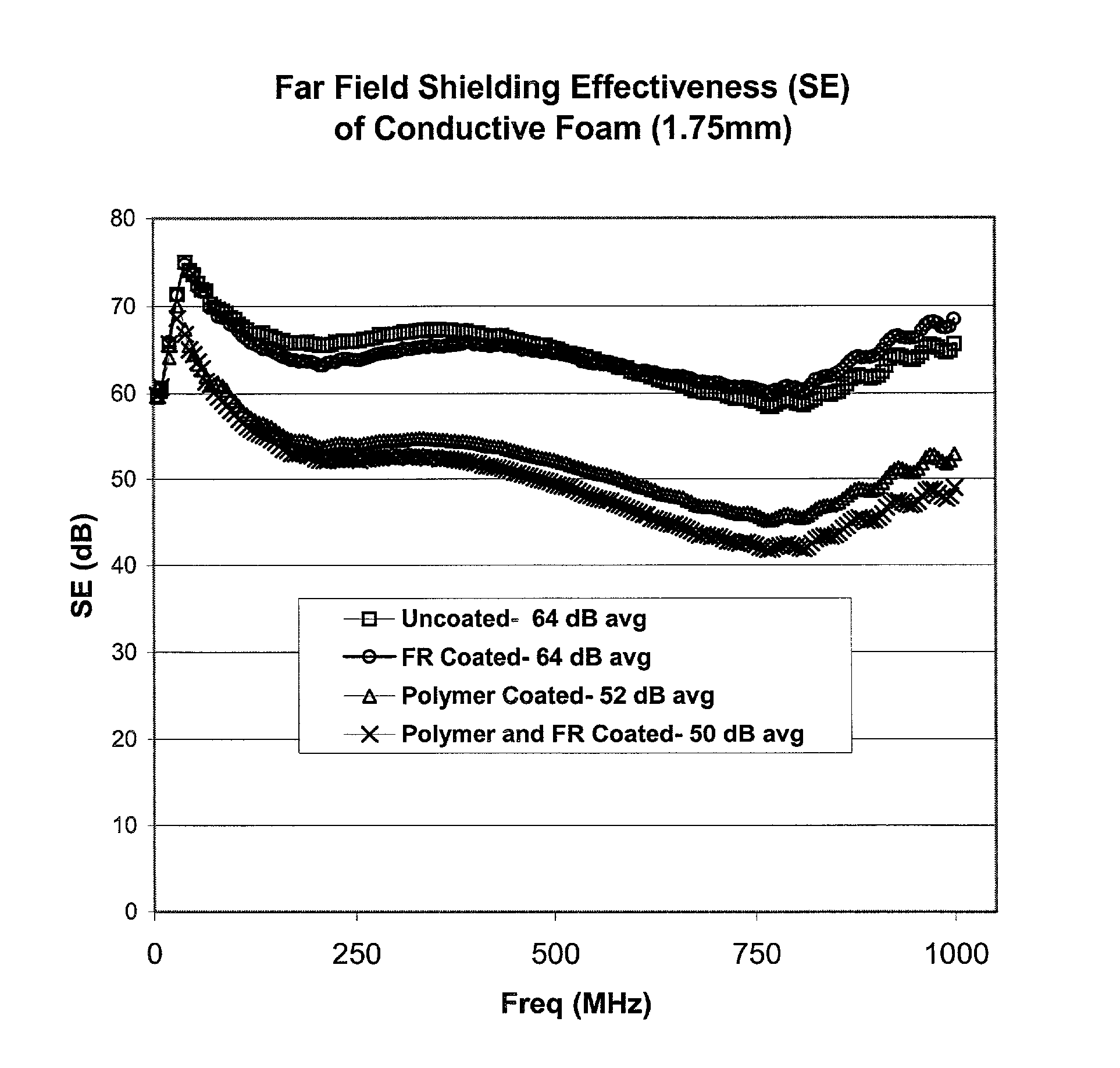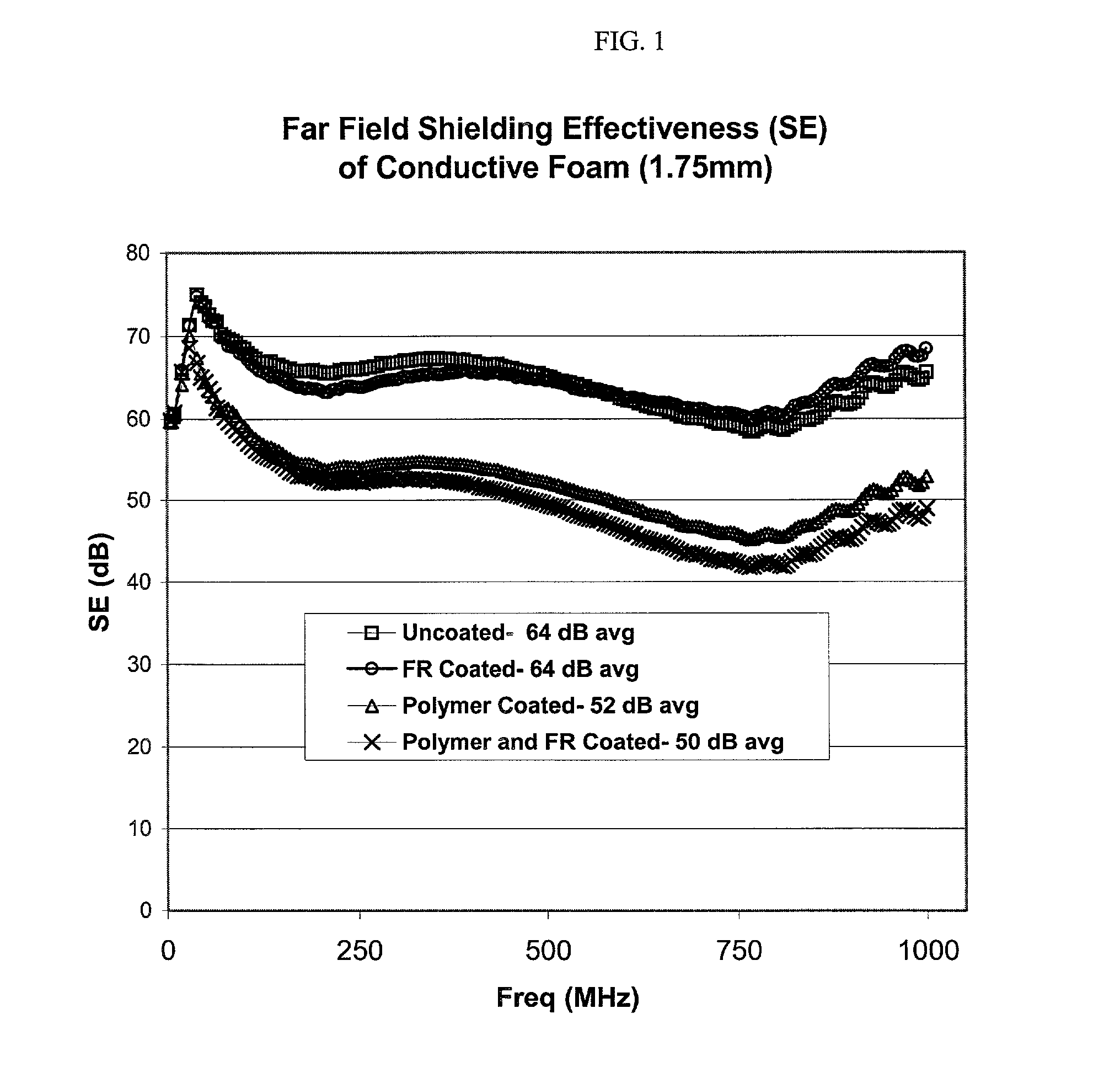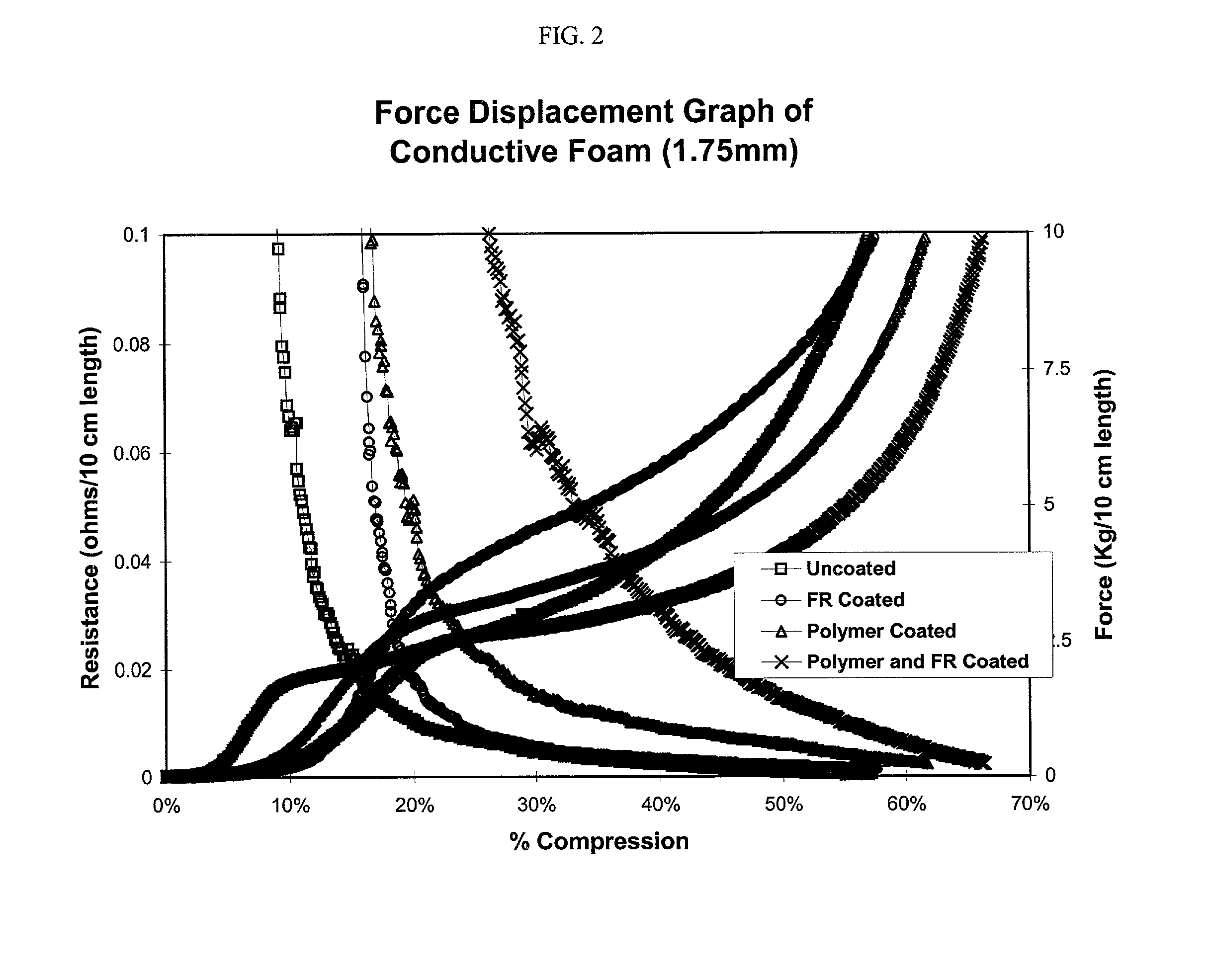Flame retardant, electrically conductive shielding materials and methods of making the same
a shielding material and electrically conductive technology, applied in the field of flame retardant electrically conductive emi shielding materials, can solve the problems of loss of conductivity of coated parts of fabric, interference with the operation of other electronic devices with a certain proximity, and generation of electromagnetic radiation within the electronic circuitry of equipment, so as to increase the bulk resistivity, and reduce the effect of heat generation
- Summary
- Abstract
- Description
- Claims
- Application Information
AI Technical Summary
Benefits of technology
Problems solved by technology
Method used
Image
Examples
example 1
[0033]Commercially available wholly metallized fabric-on-foam shielding materials were coated with undiluted Apex 911 flame retardant (viscosity of 25 cps) available from Apex Chemical Company. The fabric-on-foam shielding materials in two different thicknesses (1.0 mm and 3.2 mm) were taken from line runs of Laird Technologies fabric-on-foam products CF0040-4 and CF0125-4, respectively. 5″×11″ sheets of conductive foam were dipped in a 5″×12″ pan containing the flame retardant. The foam sheets were then nipped with a dual rubber nip roller at 10 psi. After padding, the coated foam sheets were dried in an oven at 110 degrees Celsius for approximately 25 minutes. The coated foam sheets were visually observed to be free of occluded pores. The coating weights of the Apex 911 were determined to be 4.34 opsy for the 3.2 mm material, and 1.76 opsy for the 1.0 mm material. Specimens were cut into 5″×½″ bar samples and subjected to the UTL94 Vertical Burn (V) test. The burn test results are...
example 2
[0036]Samples of 1.75 mm thick conductive foam commercially available from Eltech Systems Corp. of Chardron, Ohio. were obtained and treated in accordance with the invention. The conductive foams were carbon coated polyurethane foam plated with 30 grams / square meter of nickel, which is sold under the product code number 2620. One group of foam samples (n=5) were not treated and served as a control. A second group of 5″×7″ sheets of conductive foam (n=5) were dipped in a 5″×12″ pan containing undiluted Flame Proof 911 coating by Apex Chemical Co and 1 weight percent (wt. %) Pentrapex 1924 (wetting agent) also available from Apex Chemical Company. The foam sheets were then nipped with a dual rubber nip roller at 10 psi. After padding, the coated foam sheets were dried at 110 degrees Celsius for approximately 25 minutes. A third group of foam samples (n=5) were first coated with a water-based urethane coating (Solucote 1024-4C by Soluol Chemical Co.). 5″×7″ sheets of conductive foam we...
example 3
[0040]Samples of a wholly conductive fabric-on-foam shielding material as in Example 1 having a thickness of 1.5 mm were impregnated with undiluted Apex 911 (with and without urethane) and with urethane alone. The material was obtained from a line run of Laird Technologies fabric-on-foam product CF0060-4. The samples of the material were impregnated following the procedure described in Example 2 with the exception that the 911 flame retardant included 0.2 wt. % Pentrapex 1924. The coated samples were visually observed to be free of occluded pores. A specimen of sample 3 (urethane coating+911 coating) was also examined under an electron microscope to evaluate the dispersed nature of the flame retardant. The internal surfaces of the pores were observed to contain an adhered particulate occupying less than 10 percent of the internal surface area. The particulate was also determined to contain a phosphorous material which correlates to the ammonium phosphate salt found in Apex 911. The ...
PUM
| Property | Measurement | Unit |
|---|---|---|
| thickness | aaaaa | aaaaa |
| thickness | aaaaa | aaaaa |
| thickness | aaaaa | aaaaa |
Abstract
Description
Claims
Application Information
 Login to View More
Login to View More - R&D
- Intellectual Property
- Life Sciences
- Materials
- Tech Scout
- Unparalleled Data Quality
- Higher Quality Content
- 60% Fewer Hallucinations
Browse by: Latest US Patents, China's latest patents, Technical Efficacy Thesaurus, Application Domain, Technology Topic, Popular Technical Reports.
© 2025 PatSnap. All rights reserved.Legal|Privacy policy|Modern Slavery Act Transparency Statement|Sitemap|About US| Contact US: help@patsnap.com



